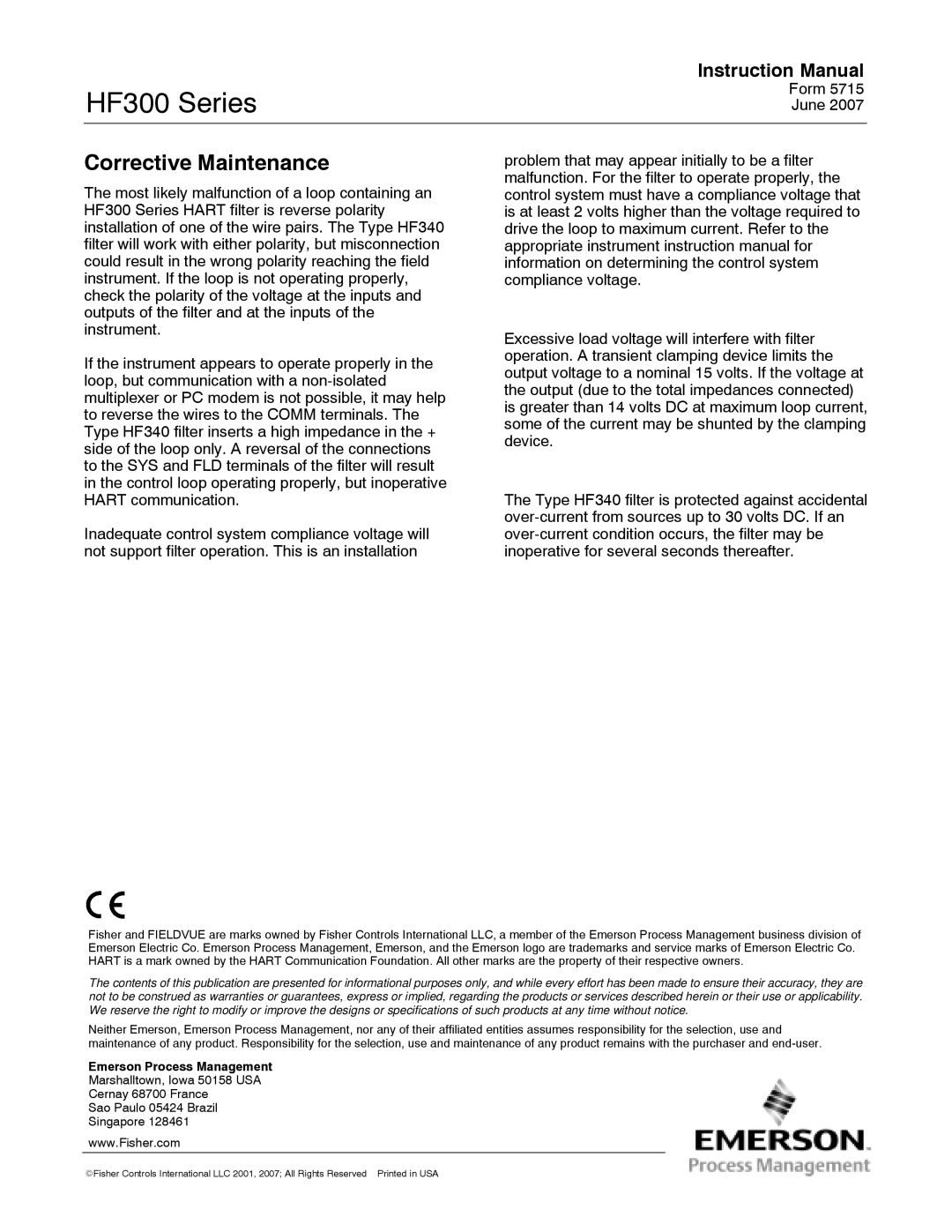HF300 specifications
Emerson Process Management’s HF300 is a sophisticated automation solution designed to enhance control and monitoring in various industrial processes. This state-of-the-art system is widely recognized for its versatility and reliability across multiple sectors, including oil and gas, chemical, and power industries.One of the primary features of the HF300 is its advanced control algorithms, which enable precise and efficient operations. The system utilizes model predictive control (MPC) technology, allowing it to anticipate process changes and optimize performance accordingly. This proactive approach helps in minimizing deviations, ensuring that processes run smoothly and efficiently.
The HF300 is also equipped with robust data analytics capabilities. By leveraging real-time data, the system can provide actionable insights that facilitate informed decision-making. Users can easily monitor performance metrics, detect anomalies, and identify areas for improvement. This intelligence not only enhances operational efficiency but also reduces downtime and maintenance costs.
Another significant characteristic of the HF300 is its modular design. This architecture allows for scalability and flexibility, enabling organizations to tailor the system to their specific needs. Whether a company is looking to expand its operations or integrate new technologies, the HF300 can evolve alongside these changes without necessitating a complete overhaul.
The HF300 integrates seamlessly with Emerson’s DeltaV distributed control system, which further enhances its capabilities. This integration provides a unified platform for process automation, allowing for streamlined management of complex control systems. Furthermore, Emerson's commitment to cybersecurity ensures that the HF300 is equipped with robust security measures, protecting sensitive data against potential threats.
Reliability is another hallmark of the HF300. The system is designed to operate in harsh environments and is built with quality components that withstand extreme conditions. This resilience translates to minimal downtime and a longer lifecycle, enabling organizations to achieve a higher return on investment.
In conclusion, Emerson Process Management’s HF300 stands out as a powerful automation solution characterized by advanced control technologies, real-time data analytics, modularity, seamless integration, and reliability. It offers organizations the tools necessary to optimize their operations and maintain a competitive edge in today’s dynamic industrial landscape.

